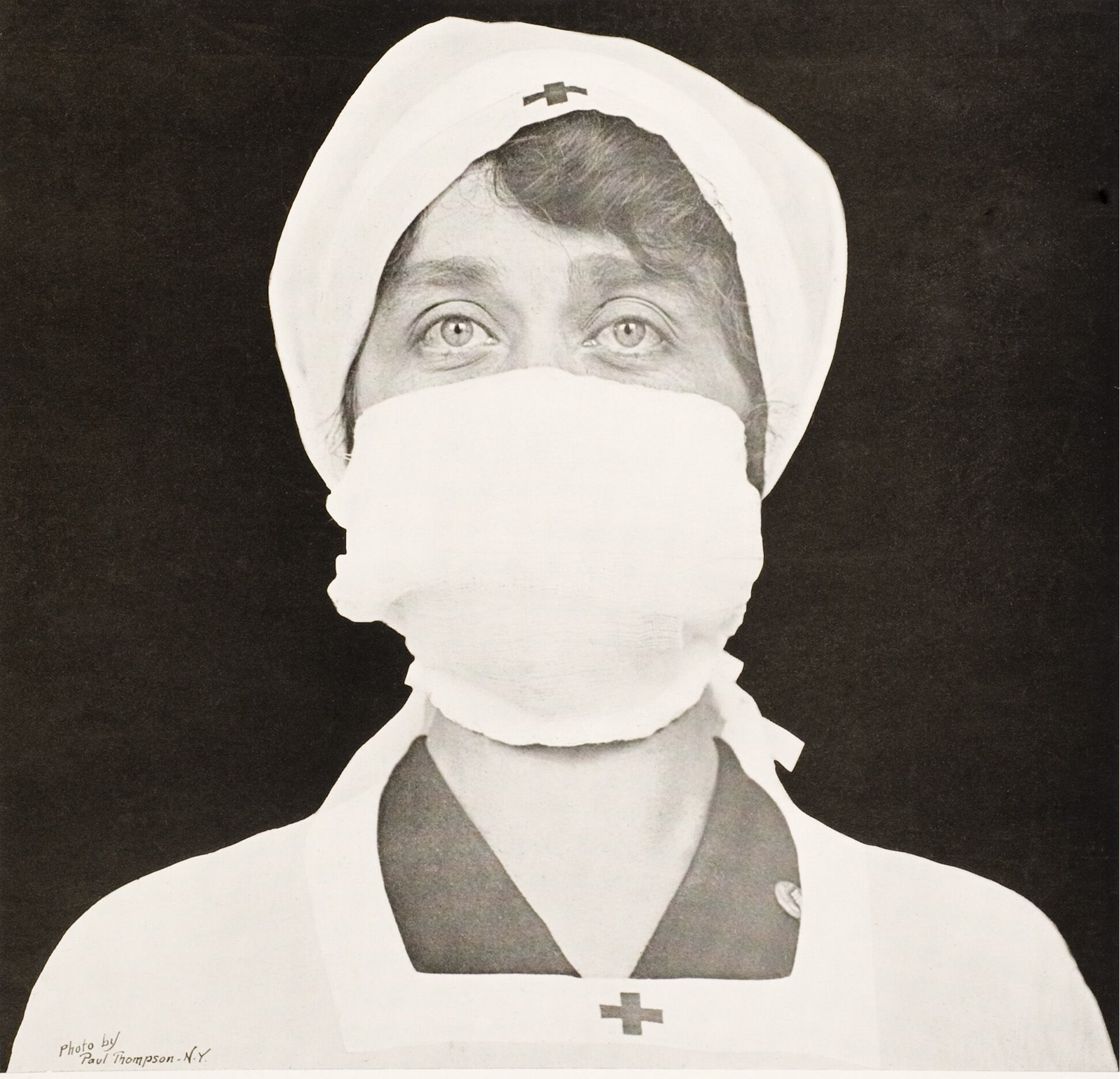1918 vs. 2020
A comparison between the 1918 and 2020 pandemics.Hover over the points above to see images and hear audio comparing 1918 to 2020.
Graphic by Grace Peng, Managing Editor
Ria Dubey, Staff Writer & Sameeksha Agarwal, Staff Writer
As the saying goes, history repeats itself. In 1918, the Spanish flu, more commonly known as influenza or the flu, struck many countries across the world. Although there are vaccines available now to treat this disease; no such thing existed in 1918. The Spanish flu was extremely deadly and infected more than a third of the world’s population in four successive waves. Even though COVID-19 is a completely different illness caused by a different virus, the circumstances greatly resemble those during the Spanish flu. AP English Language and Composition teacher Tania Pope watched a CNN documentary on the influenza pandemic and noticed many similarities between what is happening today and what happened a century ago.
“It was interesting to see the same kind of resistance exhibited by human beings,” Pope said. “The nature of who we are as humans doesn’t seem to change.”
Many showcase their resistance by refusing to wear masks citing that they value individual freedom or the lack of evidence towards the virus’ existence. Furthermore, just like how people started inventing the term “COVID fatigue” in 2020, “flu fatigue” also arose during the Spanish flu outbreak. This term refers to people’s exhaustion from quarantining and practicing other precautions. Eventually, after the first surge of the flu, people began to care less about the pandemic in an attempt to get back to their daily lives, thereby resulting in a second wave of cases. However, despite the similarity between the current and past situations, some people are not being cautious this time, ignoring COVID-19 guidelines and procedures.
“We seem to fall into a pattern of repeating the same mistakes. We’re seeing thousands die now and we still have the same sort of irresponsible behaviors and same human frustration,” Pope said.
Although people’s attitudes have not evolved over time, science definitely has. There have been many technological improvements, improving the medicines and facilities of the past. People spent two decades developing the influenza vaccine, whereas today, they created highly effective COVID-19 vaccines less than a year after the discovery of the first case. Additionally, the masks worn to prevent the spread of viruses have undergone drastic changes since the influenza pandemic. In the early 1900s, they consisted of mainly fabric and were, therefore, much less effective compared to today’s particle-filtering N-95 masks.
Looking ahead, the Spanish flu pandemic was immediately followed by the Roaring Twenties, and we have yet to see if we will undergo the same transition from the current crisis.
“I definitely think that something resembling the Roaring Twenties is going to happen,” Sujana Vangala, a sophomore at Northview, said. “People have experienced a loss of interactions with others, so they’re going to go wild as soon as they can.”
A popular novel written during the 1920s, “The Great Gatsby,” truly captures the similarities between both pandemics. The book reflects the many ways such a crisis can affect society; set in the 1920s, it depicts how people were sick of staying at home and as a result took advantage of their new-found freedoms to go out and be reckless after the pandemic. It also emphasizes the stark contrast between the lives of the rich and the poor—how the rich were much more privileged. This stratified society’s impacts strongly tie into the current circumstances.
“We seem to fall into a pattern of repeating the same mistakes. We’re seeing thousands die now and we still have the same sort of irresponsible behaviors and same human frustration.”
“Income inequality is becoming worse,” Sriram Yerneni, a junior at Northview, said. “It will be difficult for low-income families to navigate at a time like this.”
One of the themes of the book portrays people selfishly. There is a myriad of lying and deceit as the characters do not wish to take responsibility for their actions, and the world’s current situation portrays this as well.
“We can’t rely so much on everybody right now,” Yerneni said. “And I think in ‘The Great Gatsby’, a huge element, about the book is how people, ultimately, they just want to serve their own needs.”
The situation a century ago is analogous to the current situation the world is in. And as it so often does, history is once again repeating itself. However, the question remains: will we learn from our mistakes this time, or will we continue our fall into old habits of self-prioritization?



